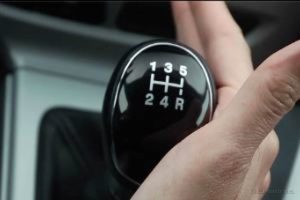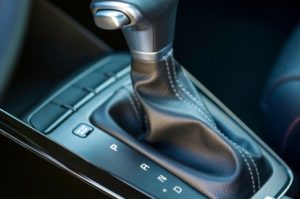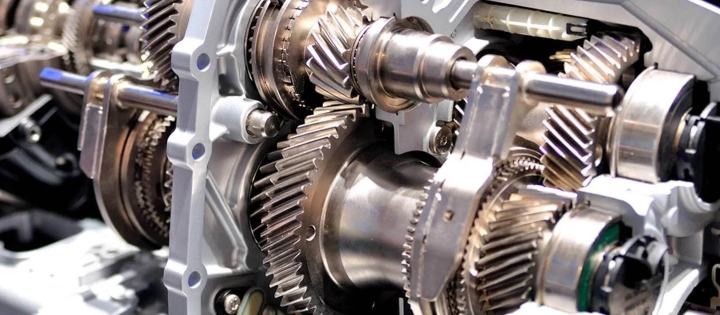What is Transmission in cars?
In simple terms, a vehicle transmission is a system that helps the car move forward and backward.
In the simplest terms, a car’s transmission is a vehicle’s gearbox.
A transmission works by using gears to transmit power from the engine to the wheels of the car.
Types of Transmissions
Having understood what is transmission in cars, there are two main types of transmissions: manual and automatic.
In a manual transmission vehicle, the driver is required to use a clutch pedal and a gear shift to change gears.
This basically means the driver has to manually control the gears to make the car go faster or slower.
On the other hand, in automatic transmission vehicle, the driver is not required to use a clutch pedal or a gear shift.
Instead, the transmission automatically selects the appropriate gears based on the speed of the car. In this type of cars, the built-in sensors, processors and actuators operate the clutch at the perfect moment based on your current speed, how you press down on the accelerator among other factors.

A Manual Transmission car. Photo/courtesy
Types of Automatic Transmissions
The following are the most common types of automatic transmissions that are commonly used in vehicles:
Traditional automatic transmission: This is definitely the most common type of automatic transmission and is found in the most of vehicles with automatic transmission.
This type uses a set of gears to transmit power from the engine to the wheels, and it uses a torque converter to seamlessly engage and disengage the transmission.
Continuously variable transmission (CVT): A CVT is a type of automatic transmission that uses a belt and pulley system instead of gears to transmit power. It can continuously vary the gear ratio, which can improve fuel efficiency and performance.
Dual-clutch transmission (DCT): A DCT is a type of automatic transmission that uses two separate clutches to shift gears. In DCT, gears are able to shift gears faster than in the traditional automatic transmission, which can improve performance.
Automatic manual transmission (AMT): An AMT is a type of transmission that blends features of both automatic and manual transmissions. This is to say, it uses a clutch and gears like a manual transmission, but it can be operated like an automatic transmission using a gear lever or paddles on the steering wheel.

An Automatic Transmission car. Photo/courtesy
Which Transmission is the best?
It is difficult to make a ruling on this given it ultimately comes down to personal preference and the specific needs of the driver.
That being said, traditional automatic transmissions are generally the most reliable and easy to use.
By the same token, CVTs and DCTs are hailed to offer improved fuel efficiency and performance.
AMTs on the other hand offer a good compromise between the two.
However, they may not be as smooth or efficient as a traditional automatic. Eventually, the best choice will depend on your specific needs and budget.
Why German car makers prefer Traditional Automatic Transmission
There are about four main reasons why German car makers like Mercedes-Benz tend to prefer traditional automatic transmissions:
Reliability: Traditional automatic transmissions have an established reputation of reliability and are generally very durable. This is particularly important for luxury car makers like Mercedes-Benz, which place a high emphasis on reliability and quality.
Ease of use: What’s more, traditional automatic transmissions are easy to use and require minimal driver input. This quality makes them convenient for luxury cars, which are often driven by people who may have little interest in the driving experience.
Smoothness: Also, traditional automatic transmissions are known for their smooth operation, which can be especially appealing in a luxury car. What’s more, cars with automatic transmissions also tend to accelerate quicker that those with oether other transmissions.
Cost: Having understood what is transmision in cars, the types and how each of them works, it’s true some newer types of automatic transmissions can offer improved fuel efficiency and performance. They can also be more complex and more expensive to manufacture and maintain. Traditional automatic transmissions are generally simpler and less expensive, some lasting as much as 400,000 KM.
Noteworthy, while traditional automatic transmissions are the most common type of transmission used by Mercedes-Benz, the company does offer some models with other types of automatic transmissions, such as CVTs and DCTs.
Japanese car makers love CVT
Japanese car makers tend to prefer continuously variable transmissions (CVTs) in many of their vehicles. Here are some of the reasons:
Fuel efficiency: It is a known fact that CVTs can offer improved fuel efficiency compared to traditional automatic transmissions, as they can continuously vary the gear ratio to optimize power delivery and minimize engine revolutions. This can help reduce fuel consumption and lower emissions.
Performance: What’s more, CVTs can also offer improved performance compared to traditional automatic transmissions, as they can provide a wider range of gear ratios and allow the engine to operate at its most efficient point. This can help improve acceleration and overall performance.
Smooth operation: Having understood what is transmission in cars and how they operate, we can hail CVTs for their seamless operation. In short, they do not have the “steps” or “gears” that traditional automatic transmissions have. This can make for a more comfortable and refined driving experience.
Cost: While CVTs can be more complex and expensive to manufacture than traditional automatic transmissions, they can also be less expensive to maintain, as they have fewer moving parts and do not require frequent oil changes. This can make them more appealing to car makers, especially for lower-priced or if you like, economy models.
READ ALSO: A 20-Point Guide to Buying Your First Car
That being said, while many Japanese car makers do use CVTs in some of their vehicles, they also offer other types of automatic transmissions, such as traditional automatic transmissions and DCTs, as well as manual transmissions.
Having understood what is transmission in cars, the choice of transmission ultimately depends on the specific needs and preferences of the car maker and the target market for the vehicle.
Do you have a story you would like us to publish? Please reach us through info@gotta.news




























